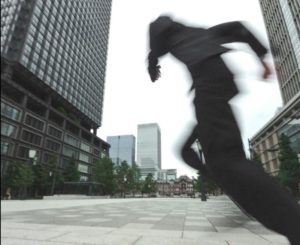Antonym:ひだり vs. みぎ
What is the difference between “ひだり(hidari) and みぎ(migi)”? Which is used as the meaning of “right”? After reading this, you would be answering this question. Let me introduce what their subtle differences are and how you correctly use them such as native speakers today!
ひだり (hidari)
Left / 左 / 왼쪽 / Bên trái
“ひだり(hidari)” means “Left” and which has been used as the meaning of “on or towards the side of your body that is to the west when you are facing north”. The basic ways to use it are that “___はひだり。(___ is left.)”, etc. For instance, “それはひだり。(It is left.)”, etc. Everyone could use “ひだり” as casual, polite and formal such as “それはひだりだよ。(It is left.)” as casual and “それはひだりです。(It is left.)” as polite and formal. Kanji of “ひだり” is “左“.
\ Learn Japanese language online with a personal native teacher!/
Sample
もう少し左に行って! (Move a little to the left!) (再向左边走一点!) (좀 더 왼쪽으로 가!) (Hãy bước sang bên trái thêm một chút nữa!)


本屋さん左に曲がってください。 (Turn left at the bookstore.) (请在书店左转。) (서점 왼쪽으로 돌아가세요.) (Xin hãy rẽ ở bên trái hiệu sách.)


左手側にあります。 (It’ll be on your left-hand side.) (它在左侧。) (좌측에 있습니다.) (Nó ở phía bên tay trái.)


すぐ左にあるよ。 (Just on the left.) (它就在你的左边。) (바로 왼쪽에 있어.) (Nó ở ngay bên trái đấy.)
みぎ (migi)
Right / 右 / 오른쪽 / Bên phải
“みぎ(migi)” means “Right” and which has been used as the meaning of “on or towards the side of your body that is to the east when you are facing north”. The basic ways to use it are that “___はみぎ。(___ is right.)”, etc. For instance, “それはひだり。(It is left.)”, etc. Everyone could use “ひだり” as casual, polite and formal such as “それはみぎだよ。(It is right.)” as casual and “それはみぎです。(It is right.)” as polite and formal. Kanji of “ひだり” is “右“.
Sample


もう少し右に行って! (Move a little to the right!) (再向右边去一点!) (좀 더 오른쪽으로 가!) (Hãy bước sang bên phải thêm một chút nữa!)


本屋さん右に曲がってください。 (Turn right at the bookstore.) (请在书店右转。) (서점 오른쪽으로 돌아가세요.) (Xin hãy rẽ ở bên phải hiệu sách.)


右手側にあります。 (It’ll be on your right-hand side.) (它在右侧。) (우측에 있습니다.) (Nó ở phía bên tay phải.)


すぐ右にあるよ。 (Just on the right.) (它就在你的右边。) (바로 오른쪽에 있어.) (Nó ở ngay bên phải đấy.)
\ Learn more! /









Comments